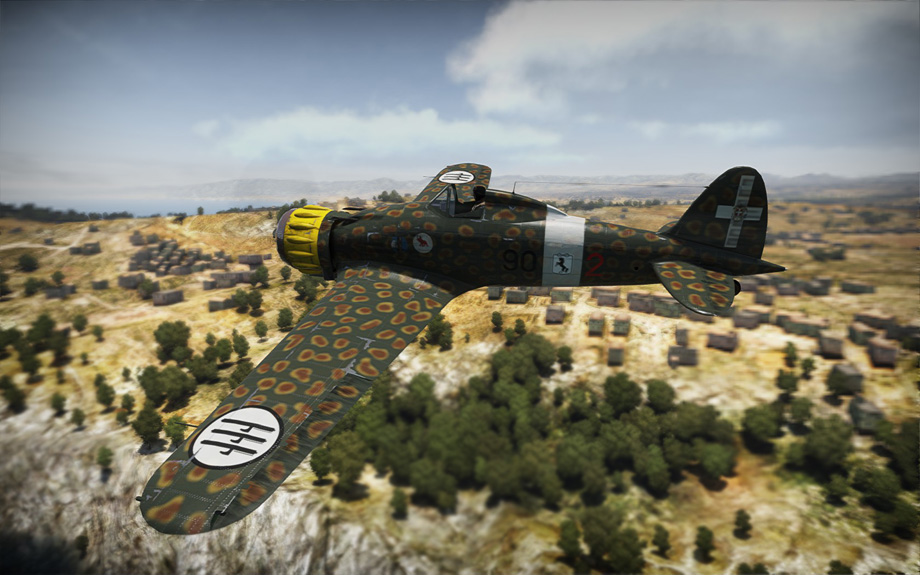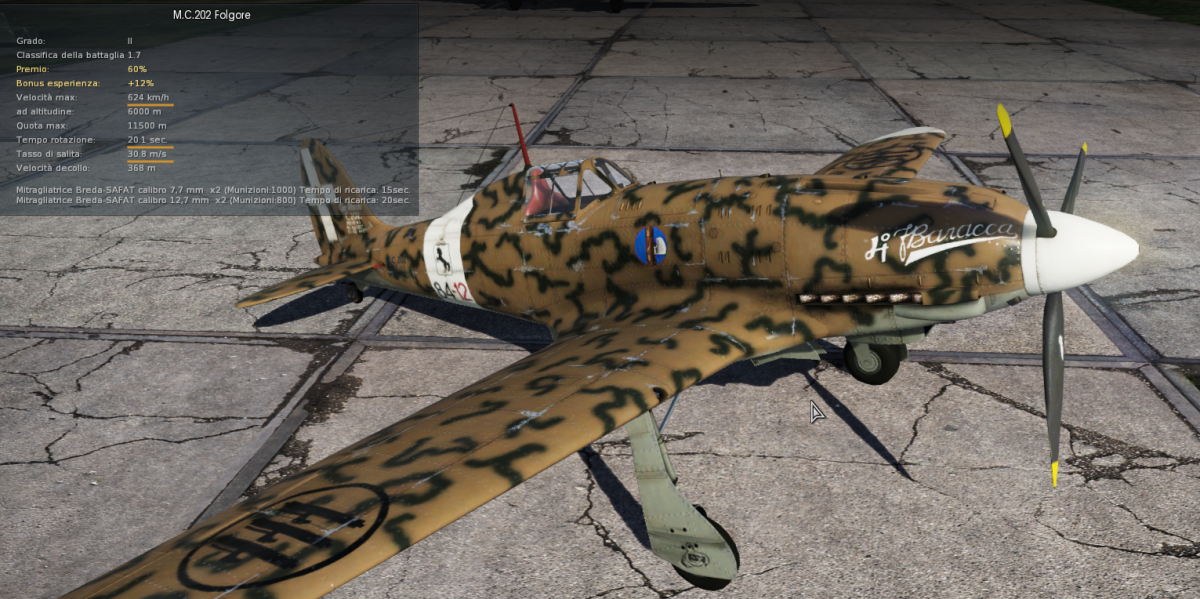
- For PC
- For MAC
- For Linux
- OS: Windows 7 SP1/8/10 (64 bit)
- Processor: Dual-Core 2.2 GHz
- Memory: 4GB
- Video Card: DirectX 10.1 level video card: AMD Radeon 77XX / NVIDIA GeForce GTX 660. The minimum supported resolution for the game is 720p.
- Network: Broadband Internet connection
- Hard Drive: 17 GB
- OS: Windows 10/11 (64 bit)
- Processor: Intel Core i5 or Ryzen 5 3600 and better
- Memory: 16 GB and more
- Video Card: DirectX 11 level video card or higher and drivers: Nvidia GeForce 1060 and higher, Radeon RX 570 and higher
- Network: Broadband Internet connection
- Hard Drive: 95 GB
- OS: Mac OS Big Sur 11.0 or newer
- Processor: Core i5, minimum 2.2GHz (Intel Xeon is not supported)
- Memory: 6 GB
- Video Card: Intel Iris Pro 5200 (Mac), or analog from AMD/Nvidia for Mac. Minimum supported resolution for the game is 720p with Metal support.
- Network: Broadband Internet connection
- Hard Drive: 17 GB
- OS: Mac OS Big Sur 11.0 or newer
- Processor: Core i7 (Intel Xeon is not supported)
- Memory: 8 GB
- Video Card: Radeon Vega II or higher with Metal support.
- Network: Broadband Internet connection
- Hard Drive: 95 GB
- OS: Most modern 64bit Linux distributions
- Processor: Dual-Core 2.4 GHz
- Memory: 4 GB
- Video Card: NVIDIA 660 with latest proprietary drivers (not older than 6 months) / similar AMD with latest proprietary drivers (not older than 6 months; the minimum supported resolution for the game is 720p) with Vulkan support.
- Network: Broadband Internet connection
- Hard Drive: 17 GB
- OS: Ubuntu 20.04 64bit
- Processor: Intel Core i7
- Memory: 16 GB
- Video Card: NVIDIA 1060 with latest proprietary drivers (not older than 6 months) / similar AMD (Radeon RX 570) with latest proprietary drivers (not older than 6 months) with Vulkan support.
- Network: Broadband Internet connection
- Hard Drive: 95 GB
Skin of Lucchini's MC200 made by PorcoRosso86 | Download here
In the blue skies above Gerbini, Sicily on June 5th, 1943, a lone Macchi C.202 fighter fell from the sky as a swirling dogfight ensued overhead, with further Italian fighters aggressively attacking a force of USAAF B-17s escorted by RAF Spitfires. Witnesses on the ground watched with stomach churning anticipation, waiting for the tell tale plume of white to appear behind the stricken fighter to show the pilot had managed to escape via parachute. It never came. Franco Lucchini, possibly the greatest Italian air ace of the Second World War, was lost to enemy action.
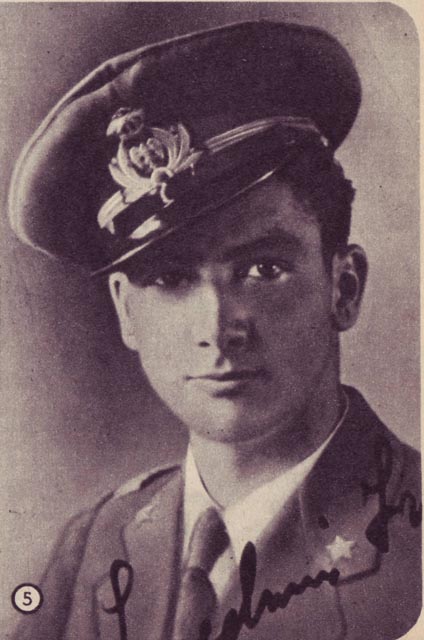 |
Born in Rome on Christmas Eve 1914, Lucchini’s father worked in the railway industry. From an early age it became apparent that young Franco would not follow his father’s footsteps: he grew up with an obsessive interest in aviation. By the age of sixteen he was already a qualified glider pilot and in 1935, at the age of twenty, he joined the Regia Aeronautica reserves as a Sottotenente (Sub Lieutenant). Training in Foggia in the rural south of Italy, Lucchini qualified and was awarded his pilot’s brevet in July 1936
His first front line unit was 91a Squadriglia (Squadron), X Gruppo (Group), of the 4o Stormo (Wing) based at Gorizia in the northern reaches of Italy. Under the command of Capitano Mario Rossi, the squadron was in the midst of converting from the Fiat CR.30 fighter to the newer CR.32 model. With war raging across the skies of Civil War torn Spain, Lucchini volunteered to join the conflict and in July 1937 he departed Italy for Cadiz.
Almost from his arrival, Lucchini found himself propelled into the thick of the action against a formidable foe. Flying the CR.32 largely against Soviet manufactured I-15 and I-16 fighters of the Republicans, Lucchini flew an impressive 122 combat missions. The subject of his aerial victories is difficult to assess for a number of reasons; Italian policy was radically different to many nations in that aerial ‘kills’ were initially credited to units rather than individuals. Furthermore, modern historians disagree to such an extent over Lucchini’s Spanish exploits that his individual tally may be anything between one and five victories.
Lucchini would next become involved in front line operations when Italy declared war on Britain and France in June 1940. By now a Tenente (Lieutenant) with 90a Squadron, Lucchini was based in Libya and flying the Fiat CR42 biplane fighter. Only days after the outbreak of hostilities Lucchini claimed a shared victory when his ‘vic’ of three CR42s shot down a lone Gloster Gladiator over the sea near Sollum. Another shared victory followed shortly afterwards when Lucchini fired the terminal shots into a Shorts Sunderland after a protracted fight against four Italian fighters, although this claim is still disputed.
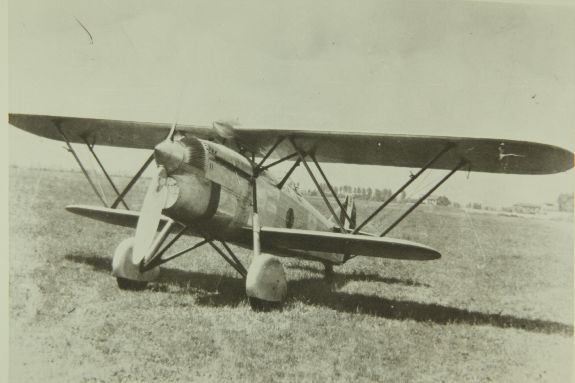 |
July 24th saw Lucchini’s first major dogfight of the war when his formation of seventeen CR42s attacked nine Blenheims escorted by fifteen Gladiators in the Sollum area. In the ensuing combat, Lucchini shot down a Gladiator and damaged three bombers. Regular encounters between the Italian fighters and RAF aircraft occurred over the next few weeks. On one occasion on August 4th, a Gladiator flown by South African ‘Pat’ Pattle – the pilot who would go on to be the RAF’s top scoring ace of World War II – was shot down by a CR42 very probably flown by Lucchini. Towards the end of the year, RAF squadrons in theatre were re-equipping with the Hawker Hurricane; whilst in Western Europe the Hurricane was already beginning to show its inferiority to axis fighters such as the Bf109, against the CR42 in North Africa it was clearly superior.
In early 1941 Lucchini and 10o Gruppo returned to Italy to re-equip with the more modern Macchi MC.200 fighter. In his opening seven months of combat, Lucchini had flown 94 operational sorties resulting in 13 air combat encounters. He had claimed three aerial victories and fifteen shared kills, and was awarded with the Medaglia d'argento al valore militare and two Medaglie di bronzo al valore militare.
After working up with the new fighter, 10o Gruppo were relocated to Trapani in Sicily in June 1941 to operate against British forces on the island fortress of Malta. Now promoted to Capitano, Lucchini was soon locked in regular dogfights against the force of Hawker Hurricanes defending the island. The bitter fighting continued over Malta and the surrounding seas, with aircraft from both sides being lost at a steady rate. In September Lucchini was injured after a forced landing following being caught out by bad weather on an escort mission. His injuries kept him away from flying for two months.
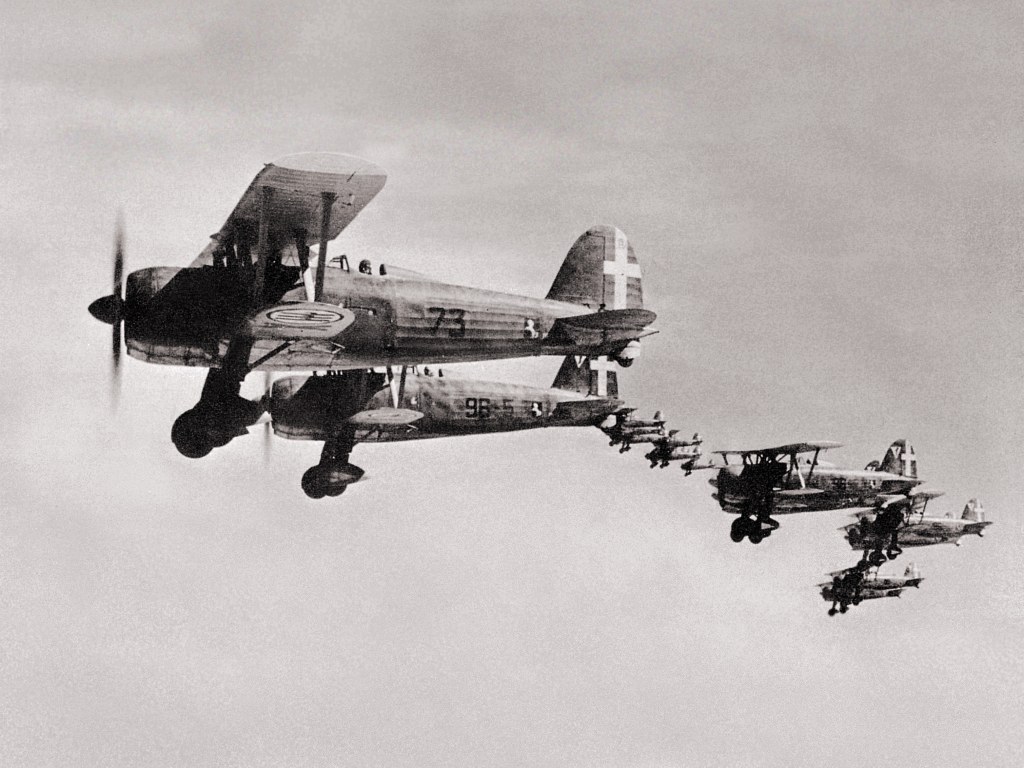 |
Lucchini returned to action against the RAF in late November. He was involved in strikes against British bombers on the ground at Malta, and was also the first pilot to fly a reconnaissance sortie in a specially modified MC.200. In December he was given command of 84a Squadron. Lucchini’s squadron was withdrawn from front line operations to re-equip with the much superior Macchi MC.202 before returning to Sicily in April 1942.
Operations in Malta were short lived, with less than two months fighting against the defenders who were now equipped with the Supermarine Spitfire Mk.V; Lucchini shot down two Spitfires in his brief tenure in theatre. After having their aircraft modified for desert operations, 10o Gruppo returned to North Africa on May 26th 1942.
Over the course of the next few months, Lucchini led his squadron against British forces in the North African theatre as the front lines raged back and forth across the desert. Encountering predominantly RAF and Commonwealth P40s, 84a Squadron were involved in the thick of the action. Leading a seemingly charmed life, Lucchini was himself shot down three times between mid July and late October, including two occasions within four days – the second of which saw him being shot in an arm and a leg.
After a lengthy period of rest and recuperation back in Italy, Lucchini would not return to combat operations until March 1943, when allied aerial activity over Sicily was on the increase. In June 1943 Lucchini was appointed Commanding Officer of 10o Gruppo, which was now beginning to upgrade to the formidable Macchi C.205.
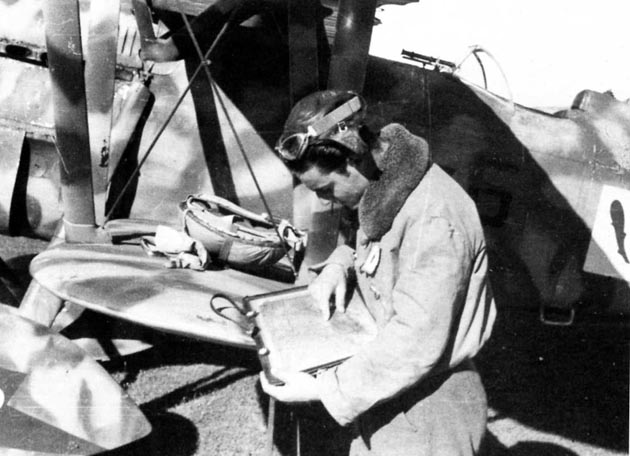 |
On July 5th, Lucchini was part of a scramble to intercept a large formation of some fifty USAAF B17s of the 99th Bomber Group, escorted by twenty RAF Spitfires of No.72 and No.243 Squadrons: this was only his fifth mission as Gruppo CO. The Italian fighters were also joined by a large force of Luftwaffe Bf109s. Lucchini’s comrades later recounted seeing their leader shoot down a Spitfire before damaging three of the B17s. His aircraft was observed from the ground as it fell out of control; there was no parachute. A car from his squadron was sent in an attempt to locate his aircraft but was unable to reach the crash site due to the heavy bombing. Two days later his body was recovered. Sources again vary as to whether Lucchini fell to defensive fire from the bombers or was shot down by an escorting Spitfire; the British fighter pilots filed claims for one enemy aircraft shot down and a second damaged whilst the American gunners claimed to have destroyed forty five fighters. In the same intense fight, fellow ace Leonardo Ferrulli was also killed.
An often serious and introverted individual but nonetheless a hugely respected pilot and leader, Luchini was well known by those who flew with him for his exceptional eyesight and ability to see the enemy first. His final number of victories is almost impossible to ascertain due to a combination of disputed records and the Italian policy in the early war of crediting every pilot involved in an action with shares in every victory: even if they did not fire a shot it was considered that there presence was enough to play a part in any success. Common estimates of his individual final score typically vary between 21 and 26 kills, with up to 52 shared victories. He was posthumously recognised in 1952 with Italy’s top military honour: the Medaglia d'oro al valor militare.
In special commemoration of Franco Lucchini, September's 'Ace of the Month', an exciting new aircraft skin will be added to War Thunder in the upcoming major patch!
About The Author - Mark Barber, War Thunder Historical Consultant
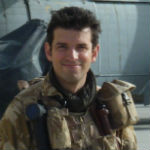
Mark Barber is a pilot in the British Royal Navy's Fleet Air Arm. His first book was published by Osprey Publishing in 2008; subsequently, he has written several more titles for Osprey and has also published articles for several magazines, including the UK's top selling aviation magazine 'FlyPast'. His main areas of interest are British Naval Aviation in the First and Second World Wars and RAF Fighter Command in the Second World War. He currently works with Gaijin Entertainment as a Historical Consultant, helping to run the Historical Section of the War Thunder forums and heading up the Ace of the Month series.
